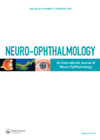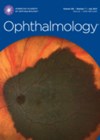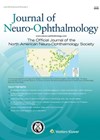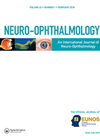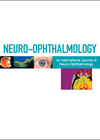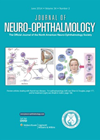You searched for "hemianopia"
Comparison of treatment for hemianopia following stroke
1 August 2016
| Claire Howard
|
EYE - Neuro-ophthalmology
|
Fresnel prisms, homonymous hemianopia, randomised controlled trial, recruitment, screening, stroke, visual search
The authors report the screening process and recruitment figures for a randomised controlled trial comparing interventions for post stroke homonymous hemianopia. Interventions included Fresnel prisms, visual search training and standard care (information only). Primary outcome measure was the change in...
Visual retraining for homonymous hemianopia following stroke
4 August 2021
| Anna Song
|
EYE - Neuro-ophthalmology
|
Clinical trials, Neuro-ophthalmology, Stroke, Visual fields, Visual loss
This is a clinical trial evaluating the efficacy of motion discrimination training as a potential therapy for stroke-induced hemianopic visual field defects involving 48 patients. They were randomised into two arms, one intervention (deficit-field) and one control (sighted-field). Patients were...
Hemianopia or visuospatial neglect: differences in information processing
1 April 2018
| Claire Howard
|
EYE - Neuro-ophthalmology
|
Eye movements, hemianopia, neglect, semantic priming
It is widely reported that visuospatial neglect and hemianopia may be superimposed, and disentangling the two conditions can be pose difficulties for clinicians. The authors of this paper explored the differences in implicit information processing which is effective in patients...
Unexpected diagnoses – stroke in children and homonymous hemianopia
1 February 2022
| Timothy Rajaratnam, Alexandros Kogiantis, Faye Barampouti
|
EYE - Neuro-ophthalmology, EYE - Imaging, EYE - General
We present the case of a 12-year-old child presenting with a few days history of left-sided visual loss. Upon further investigation with magnetic resonance imaging (MRI) she was unexpectedly diagnosed with a right-sided chronic posterior cerebral arterial territory infarct, causing...
Pilot trial of Fluoxetine for post-stroke homonymous hemianopia
3 April 2024
| Lauren R Hepworth
|
EYE - Neuro-ophthalmology
The authors present a pilot randomised placebo controlled double blind trial assessing 20mg fluoxetine once daily for 90 days versus placebo in stroke survivors with isolated homonymous hemianopia. Exclusion criteria were extensive in terms of pre-existing ophthalmic or neurologic disease,...
Homonymous hemianopia due to stroke presenting symptoms and lesion locations
1 July 2024
| Lauren R Hepworth
|
EYE - Neuro-ophthalmology
A retrospective case notes review was undertaken of patients diagnosed with homonymous hemianopia following a radiologically confirmed stroke. A total of 85 patients were identified by searching an electronic medical records system over an 11-year period. Data were extracted from...
Using a pupillometer to confirm presence of RAPD in post stroke homonymous hemianopia
1 October 2018
| Claire Howard
|
EYE - Neuro-ophthalmology
|
Amplitude, latency, pupillary light reflex pathway, pupillometer, retrograde trans-synaptic degeneration
It has been reported that relative afferent pupillary defects (RAPDs) may be present in patients with occipital lobe lesions. However, a small contralateral RAPD due to a difference in the crossed and uncrossed fibres can be difficult to detect using...
Bitemporal hemianopsia as a result of ethambutol toxicity
1 October 2016
| Claire Howard
|
EYE - Neuro-ophthalmology
|
Bitemporal, Mycobacterium, ethambutol, hemianopsia, toxicity
The authors present six cases of visual loss in patients treated with ethambutol for mycobacterium avium complex, including four patients with bitemporal hemianopsia. Two additional patients were undergoing glaucoma monitoring and developed visual field defects with ethambutol treatment, which recovered...
Is virtual reality perimetry as reliable as static perimetry in detecting neurological visual field loss?
1 July 2024
| Claire Howard
|
EYE - Neuro-ophthalmology
This study compares agreement between virtual reality perimetry (VRP) and static automated perimetry (SAP) in a variety of neuro-ophthalmological conditions. For this work the Order of Magnitude (OM) VR-based visual field assessment system was used which has been developed by...
Reported cases of hemifield slide phenomenon
1 October 2014
| Claire Howard
|
EYE - Neuro-ophthalmology
This article reports three cases of hemifield slide, a phenomenon whereby there is an inability to stabilise and fuse visual hemifields. It occurs with heteronymous visual field loss and is thought to result from the loss of corresponding retinal points....
Two illustrative cases of AZOOR
1 February 2019
| Claire Howard
|
EYE - Neuro-ophthalmology
|
Acute zonal occult outer retinopathy, autofluorescence, ellipsoid zone, enlarged blind spot
The authors present two illustrative cases of acute zonal occult outer retinopathy (AZOOR) which causes acute idiopathic blind spot enlargement. The disease is characterised by sudden loss of outer retinal function associated with photopsia, with minimal or no fundoscopic changes...
Posterior circulation stroke associated demographics, risk factors and aetiology
3 June 2024
| Lauren R Hepworth
|
EYE - Neuro-ophthalmology
The authors present a retrospective case notes review of patients diagnosed with homonymous hemianopia following a radiologically confirmed stroke. A total of 85 patients were identified by searching an electronic medical records system over an 11-year period. Data were extracted...

